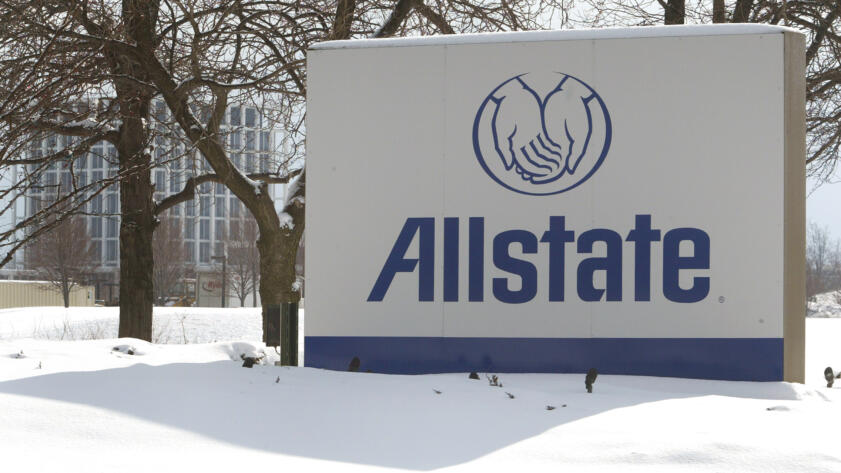A pair of newly public documents filed with a California administrative law judge show experts accusing the company of systematically overcharging customers it believed to be the most loyal around $1 billion over the past decade.
This practice of charging higher premiums to customers an insurance company suspects are unlikely to defect to a competitor is termed “price optimization” and was the subject of a 2020 Markup investigation that found Allstate was attempting to use a new pricing algorithm for auto insurance in Maryland that would have unfairly targeted its highest-paying customers—and that the algorithm had been approved in several other states.

Allstate’s Algorithm
Suckers List: How Allstate's Secret Auto Insurance Algorithm Squeezes Big Spenders
Insurers are supposed to price based on risk, but Allstate’s algorithm put a thumb on the scale
Nearly every state, including California, bars insurers from setting car insurance rates on factors apart from the actual risk the drivers pose. Insurance regulators in 18 states and Washington, D.C., have explicitly declared price optimization illegal.
The new documents, which were initially filed in late October by the California Department of Insurance and Consumer Watchdog, a consumer advocacy group allowed by the state to intervene in the case and provide expertise, consist of written testimony from insurance industry experts who examined how Allstate set its prices.
They allege that Allstate was engaging in price optimization by giving smaller than appropriate discounts to the least-price-sensitive among its customers with clean driving records who held multiple policies with the company or who had several decades of driving experience.
Edward Cimini Jr., a senior casualty actuary with the California Department of Insurance, said he reviewed internal Allstate documents, documents the company submitted to the state describing its auto insurance pricing plan, and depositions of company employees and found that Allstate gave smaller discounts to drivers with more than 39 years of experience, a group he said is unlikely to shop around. “Since Allstate’s selections were not based on underlying costs, the final rates that Allstate charged these policyholders were actuarily unsound and unfairly discriminatory,” he said.
Allan Schwartz, an actuarial consultant hired by Consumer Watchdog to review Allstate’s pricing practices, estimated that Allstate overcharged California drivers who were owed discounts “about $1 billion.”
Since Allstate’s selections were not based on underlying costs, the final rates that Allstate charged … were actuarily unsound and unfairly discriminatory.
Edward Cimini Jr., California Department of Insurance
“Those policyholders were known by Allstate to have a lower elasticity of demand and were more likely to renew with Allstate even though they were charged premiums in excess of those based upon an actuarially sound estimate of the cost of risk transfer,” he said.
The company denies the allegations. “Allstate does not employ, and has never employed, price optimization in determining premiums in California because Allstate does not take into account an individual’s or class’s willingness to pay a higher premium relative to other individuals or classes,” Allstate spokesperson Ben Corey wrote in an email to The Markup.
In its court filings, Allstate points out that in 2011 the California Department of Insurance reviewed and approved the 2011 plan without highlighting the issues now raised in the long-running class action that triggered this hearing.
The company was sued in 2015 over alleged price optimization practices in California. Allstate moved to have the case thrown out, arguing in part that it wasn’t a matter for civil courts but rather for the state department of insurance. In 2016, the United States District Court for the Northern District of California put the case on hold and referred it to the authority of the Commissioner of the California Department of Insurance for its opinion, which triggered the administrative law proceeding. Last week, the parties agreed to enter voluntary mediation.
Two years ago, The Markup published an investigation revealing that a new method of calculating rates for car insurance customers that Allstate was trying to implement across the country attempted to charge higher rates to customers who were already paying a lot for their car insurance—essentially creating a “suckers list” of big spenders and squeezing even more money out of them.
The investigation was based on details the insurer provided to regulators in Maryland as part of its 2014 filing there that revealed the current and proposed rate for policyholders in the state. Using statistical regressions, we found that the rating factor, called CGR, would charge more—and severely limit discounts—to big spenders. Maryland regulators rejected Allstate’s plan over price optimization concerns. We found Allstate was using similar algorithms in 10 other states, but we were not able to determine if they worked exactly the same way in those states because we lacked the data we had in Maryland. Allstate did not answer our questions about the algorithms.
Consumer Watchdog founder Harvey Rosenfield, who has long been critical of Allstate’s pricing practices, said that the company found a different method of achieving the same goals in California, which only allows insurers to use a limited number of approved factors—like driving record, type of car, or number of years behind the wheel—to determine how much customers have to pay in premiums.
“What we’re contending is they took their knowledge of price elasticity and figured out a pretty straightforward way of doing it without saying so,” Rosenfield said. “Their actuaries selected relativities to set people’s premiums that punished people who Allstate knew were inelastic, who fit the profile of being less sensitive to price changes. They charged those people more.”
California isn’t the only place where Allstate has faced litigation over its use of price optimization. Shortly after the publication of The Markup’s Maryland investigation, the company was hit with a class action lawsuit in Texas that directly referenced The Markup’s reporting. That suit alleges that the company was “charging higher premiums to its more tenured policyholders than it charges otherwise identically-situated newer policyholders for the same or materially the same coverages.”
That case is still ongoing.
Correction
The story originally stated that the Texas class action lawsuit against Allstate had settled last year. It is still ongoing. The story has been updated to correct the error.





